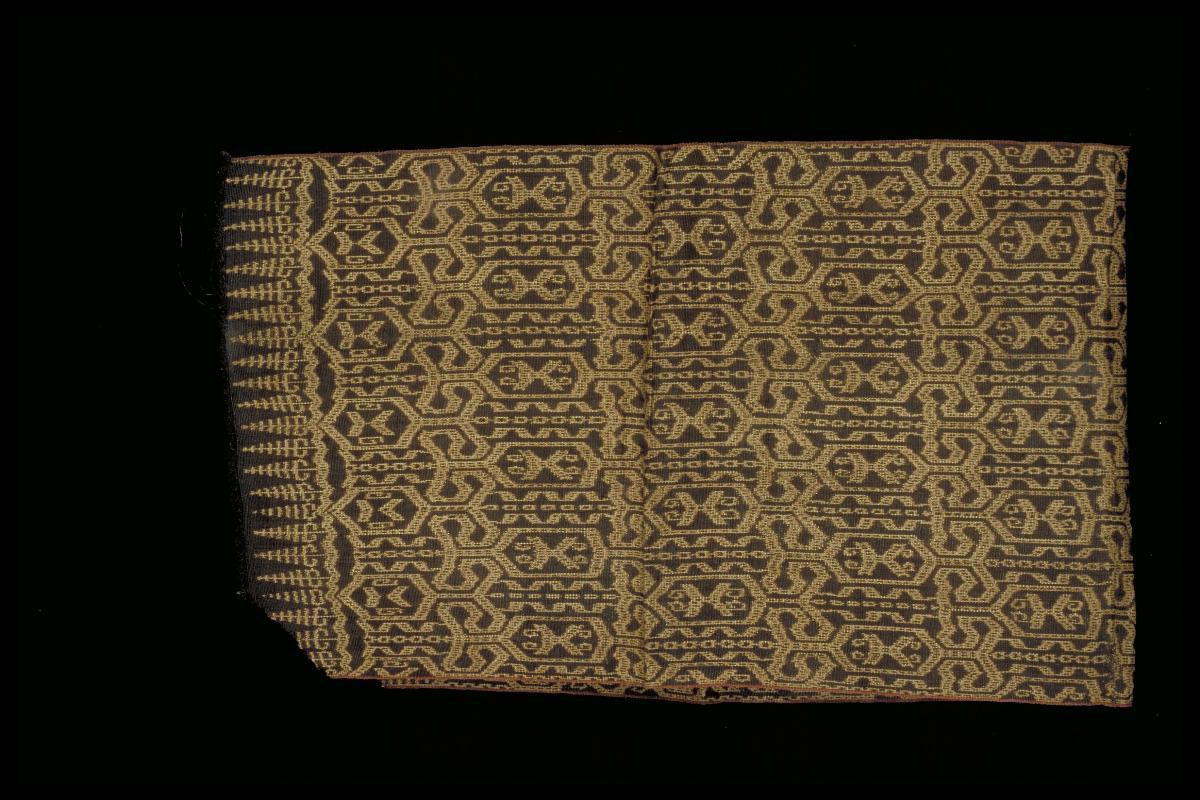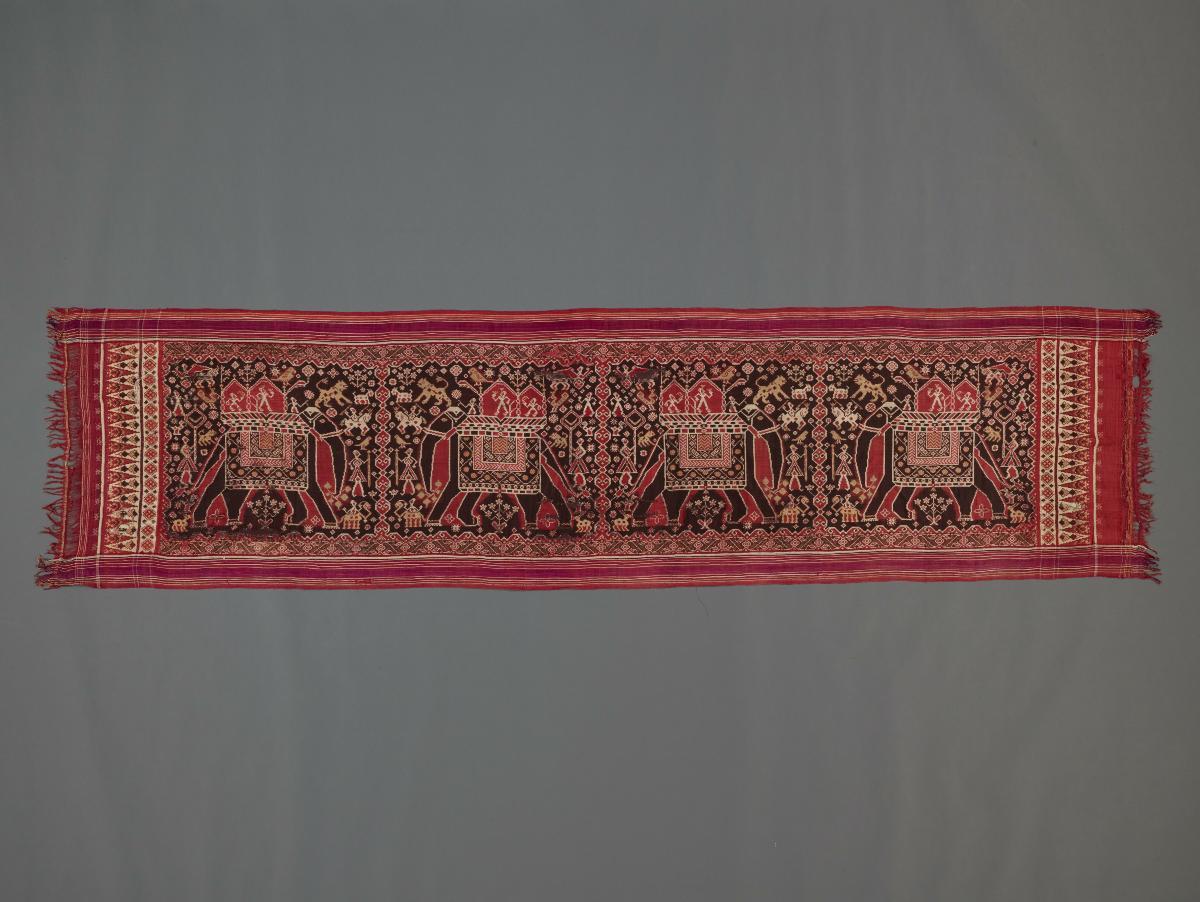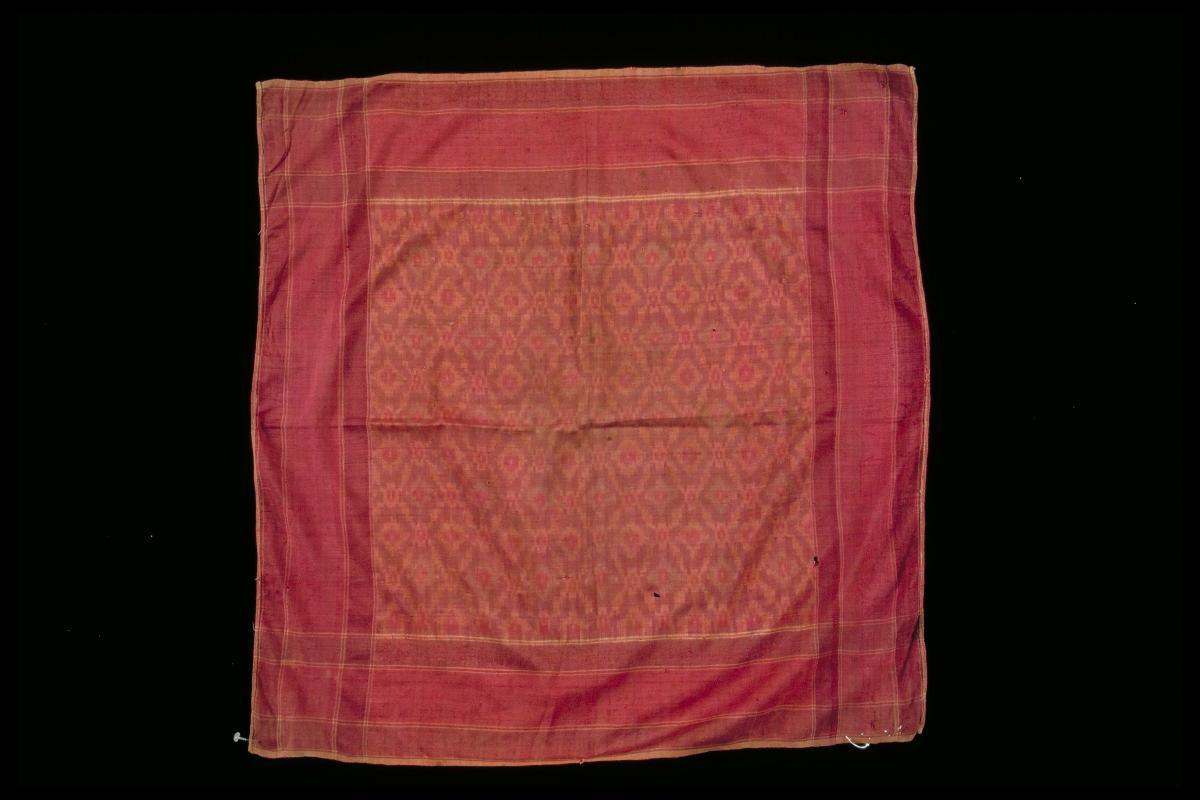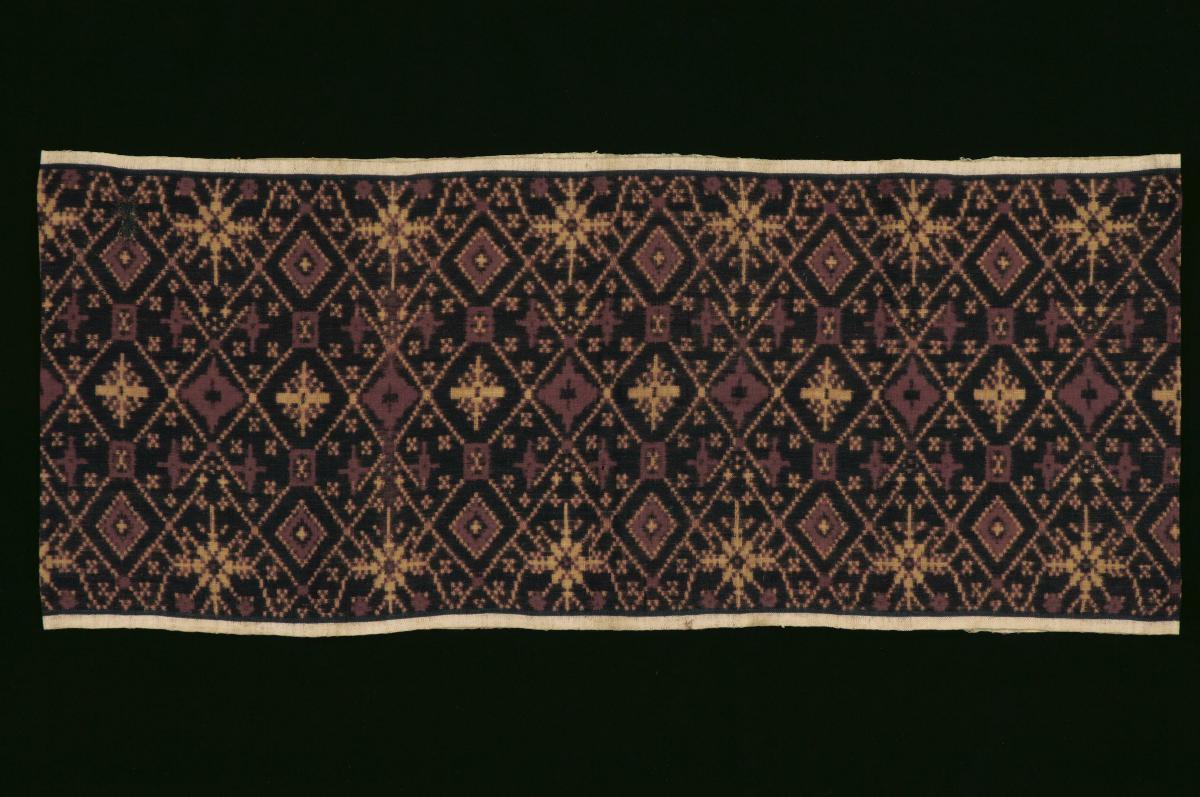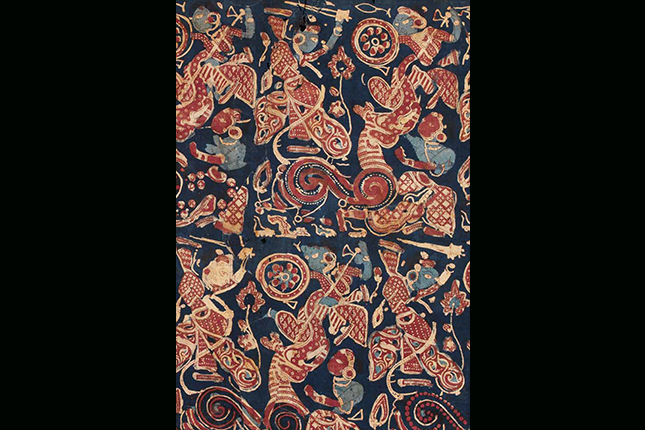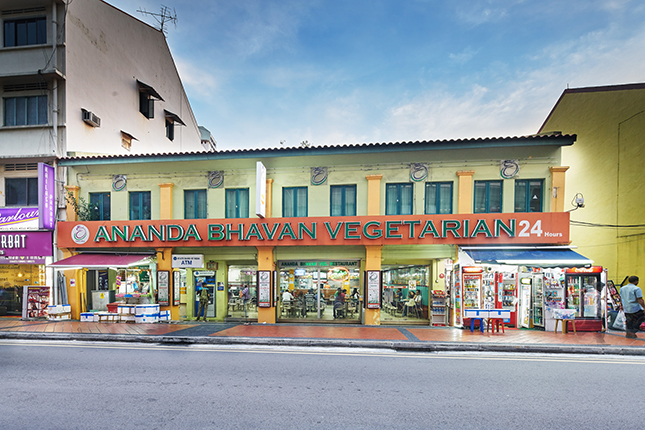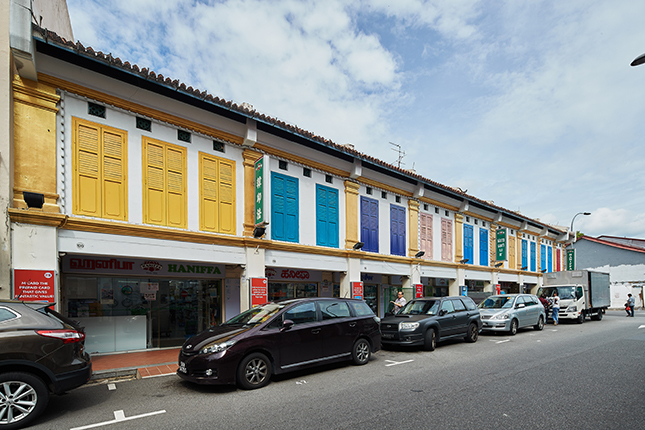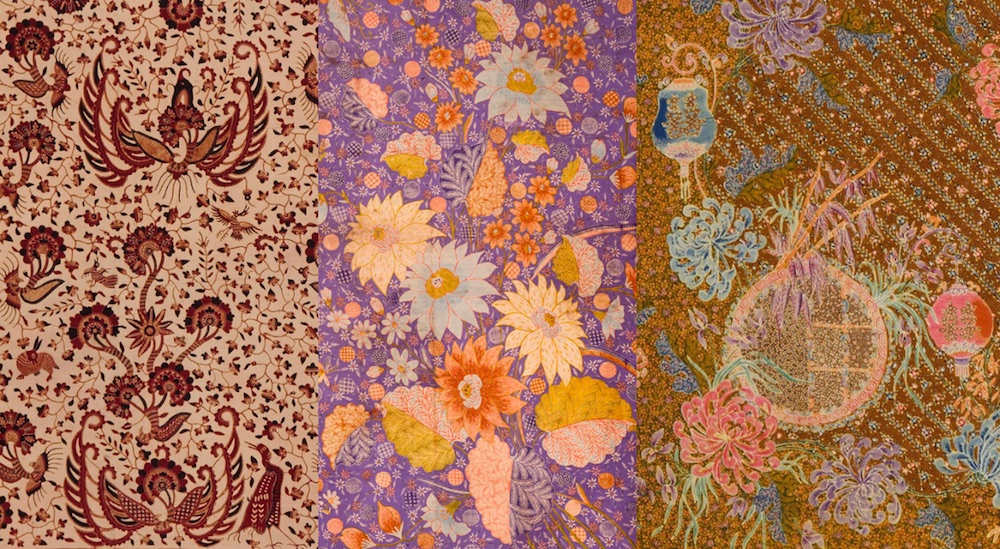The geometric motifs in the undyed tan colour in this 'ikat' are set against a brownish black dyed background with a border of tumpals (long, narrow triangular motif). Ikat, literally means ‘to tie’ describes a dyeing process in which threads are first tied using resist strips such as palm leaf or other similar material. These resists prevent the dye from colouring reserved areas of the threads. This ikat was made by the T’boli, a tribal people who inhabit the mountainous areas of South Central Mindanao in the Southern Philippines. It could have been used as a 'kumo' (ceremonial blanket) to decorate the bridal chamber, although it is rather small. T’boli ikat is unique among the Mindanao groups in its use of over-dyeing, resulting in a more complex colour scheme compared to their neighbours. Warp ikat is common among many tribal groups in Southeast Asia, which suggests its great antiquity.




